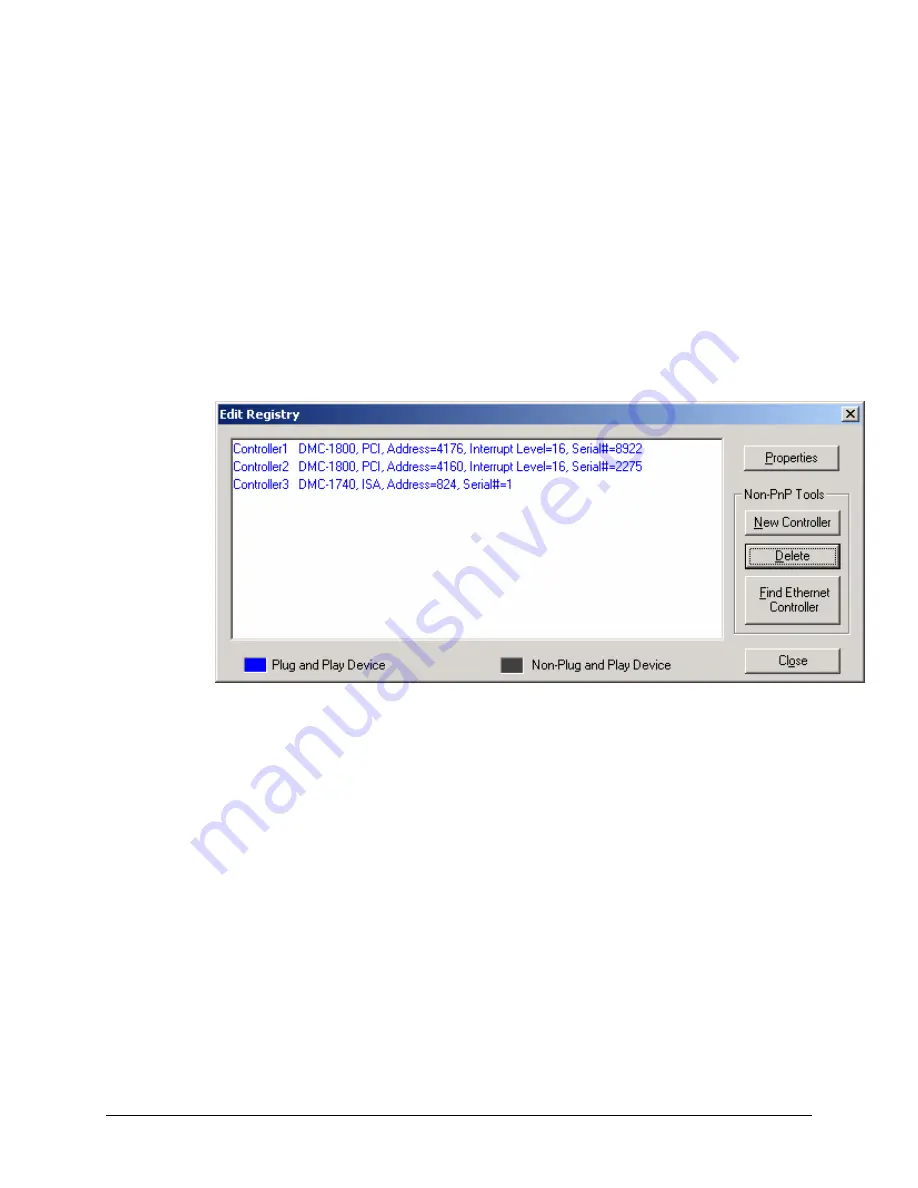
to the device by the driver when a card is installed as per the installation procedure outlined in
Ch.2. However, some advanced settings are available to modify the communications methods and
data record access. These settings are accessed through the Galil Registry Editor after the card is
properly installed.
Galil Registry Editor
The “Edit Registry” dialog box (shown in Fig 4.3) can be accessed by selecting
Controller
Registration…
under the
Tools
menu (or by selecting the toolbar icon with the magnifying glass)
within DMC SmartTERM. The Edit Registry dialog shows the current controller models installed
to the PC along with their associated I/O addresses, interrupt lines, and controller serial numbers.
The Galil Registry is part of the DMCReg.ocx ActiveX object (refer to Fig 4.1). This ActiveX
control is used to create, maintain, and modify the critical communication parameters, which are
discussed next.
Figure 4.3 - Galil Registry Editor
Setting Communications Parameters and Methods
To access the Controller Communication Parameters dialog, highlight the desired controller in the
Galil Registry Editor accessed through SmartTERM and select the
Properties
command button.
The timeout property under the
General Parameters
tab (shown in Fig 4.4) allows the user to
select the timeout period that the Galil software waits for a response from the controller before
generating an error. If the controller does not reply with the data response and a colon (or just a
colon for commands that do not invoke responses), then the Galil software API will generate the
timeout error code -1 (A time-out occurred while waiting for a response from the Galil controller).
The default setting for the timeout is 5000ms, which should be sufficient for most cases.
DMC-1600
Chapter 4 - Software Tools and Communications
•
45






























